Homeowners Insurance
Half of Home Insurance Policyholders Worry Their Homes Will Become Uninsurable
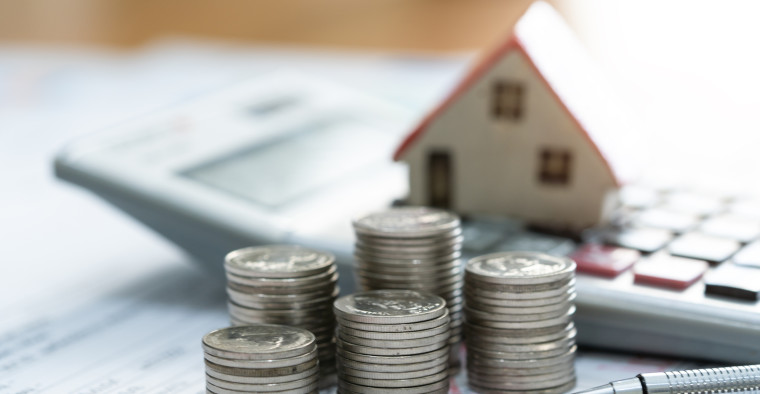
Two in 3 home insurance policyholders say their rates rose in 2024, according to the latest ValuePenguin survey of nearly 2,000 U.S. consumers.
Rising rates aren’t the only concern, though, as 50% of policyholders worry their homes will become uninsurable in the future. And 25% have received nonrenewal notices.
Here’s what else we found.
On this page
- Key findings
- 50% of home insurance policyholders fear their homes will become uninsurable
- Most homeowners experienced rate hikes in 2024
- 75% of policyholders expect insurance rate hikes in 2025
- Shopping around is most popular way to save
- 31% of homeowners have considered self-insuring
- How to keep homeowners insurance costs down: Top expert tips
- Methodology
Key findings
- In just a year, the rate of home insurance policyholders who worry their homes will become uninsurable nearly doubled. 50% of policyholders fear this’ll happen in the future, up from 26% in 2024. These fears are justified, as 25% of policyholders have received nonrenewal notices, up from 19% last year.
- Those with home insurance are seeing rising rates. Two-thirds (67%) say their home insurance rates rose in 2024, though that’s lower than the 72% who reported this last year. Among those with 2024 rate increases, 38% said theirs was 10% or higher.
- Policyholders don’t expect relief soon. Three-quarters (75%) believe their home insurance rates will rise in 2025, with 44% saying their premiums are more difficult to afford now than in prior years. To save money, 34% of policyholders have downgraded or reduced their coverage.
- Insured consumers are savvier with saving. 58% of policyholders say they’ve shopped around for home insurance, with successful switchers saving an average of $1,034 yearly the last time. Additionally, 56% of policyholders say they asked their insurer for discounts, with those who received them saving an average of $781 annually the last time.
- Some question even having home insurance. Almost a quarter (24%) of policyholders don’t think home insurance is worth the expense, and 31% have considered self-insuring.
50% of home insurance policyholders fear their homes will become uninsurable
Half of home insurance policyholders worry their homes won’t be insurable at some point. That’s nearly double the rate from last year’s survey, when 26% were worried. The top causes for concern are inflation (26%), the home insurance crisis (16%) and climate change (12%).
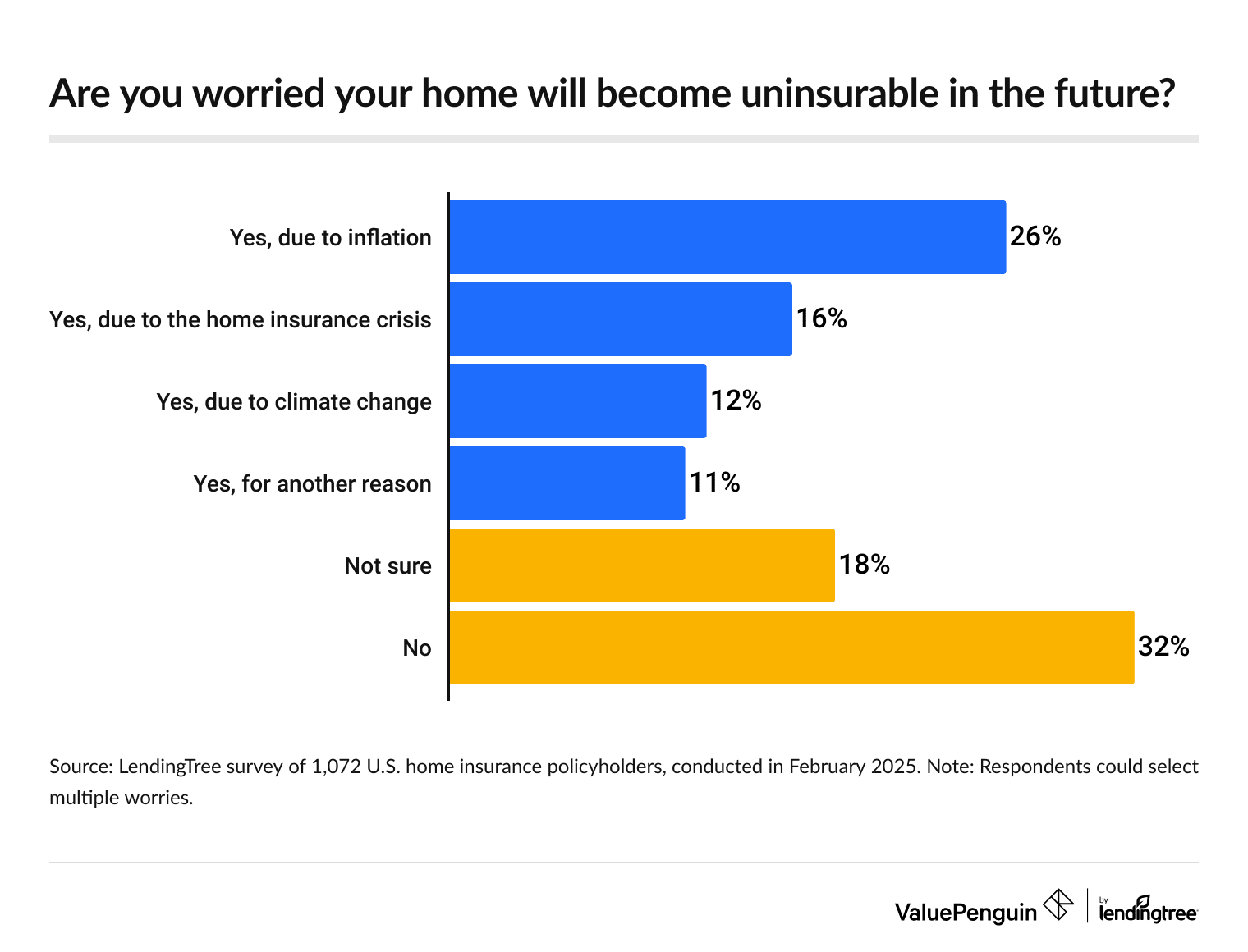
Younger generations are more concerned about this. In fact, 84% of Gen Zers ages 18 to 28 with insurance policies are worried their homes will become uninsurable. That’s followed by:
- 67% of millennials ages 29 to 44
- 38% of Gen Xers ages 45 to 60
- 27% of baby boomers ages 61 to 79
Meanwhile, policyholders with children younger than 18 (63%) and those without children (51%) are more likely to be concerned about the insurability of their homes than those with children 18 or older (33%).
Lower-income households are also more likely to fear uninsurability. Policyholders earning less than $30,000 a year (53%) are most likely to fear uninsurability, while only 48% of six-figure earners share those fears.
Amid home insurance crisis worries, close to two-thirds of policyholders (62%) want the federal government to get involved in the market, up from 52% last year. This is highest among Gen Zers at 79%.
The concerns continue, as 25% of policyholders have received nonrenewal notices, up from 19% last year. Interestingly, the likelihood increases as you get younger, even if those groups likely have had policies for shorter periods. Just 9% of baby boomer policyholders have received a nonrenewal notice from their insurer. That compares with:
- 17% of Gen Xers
- 36% of millennials
- 56% of Gen Zers
Among those who’ve received a nonrenewal, 42% shopped around for a new policy and 35% renegotiated their policy.
ValuePenguin home insurance expert and licensed insurance agent Rob Bhatt says home insurance concerns are justified.
"The homeowners insurance market is under duress, and it’s creating real challenges for many homeowners," he says. "Home insurance is becoming harder to find in many parts of the country, including California, Texas and Florida."
Insurance companies are devising strategies to manage the large costs of recent disasters.
"Many companies have had to raise their rates to stay solvent," Bhatt says. "In some cases, they’ve stopped accepting new customers or pulled out of certain areas because they've been spending more to settle claims than they’ve been earning in premiums."
Most homeowners experienced rate hikes in 2024
Two-thirds (67%) of home insurance policyholders say their rates increased in 2024. This is down from last year’s report, when 72% said their rates rose the prior year.
Baby boomers with home insurance policies were the most likely to experience rate hikes in 2024, at 70%. That’s closely followed by:
- 68% of millennials
- 66% of Gen Xers
- 64% of Gen Zers
The average cost of homeowners insurance is $179 a month.
As far as how much more people are paying, a little more than a third (35%) of those who experienced rate hikes in 2024 reported increases of 5% to 9.9%.
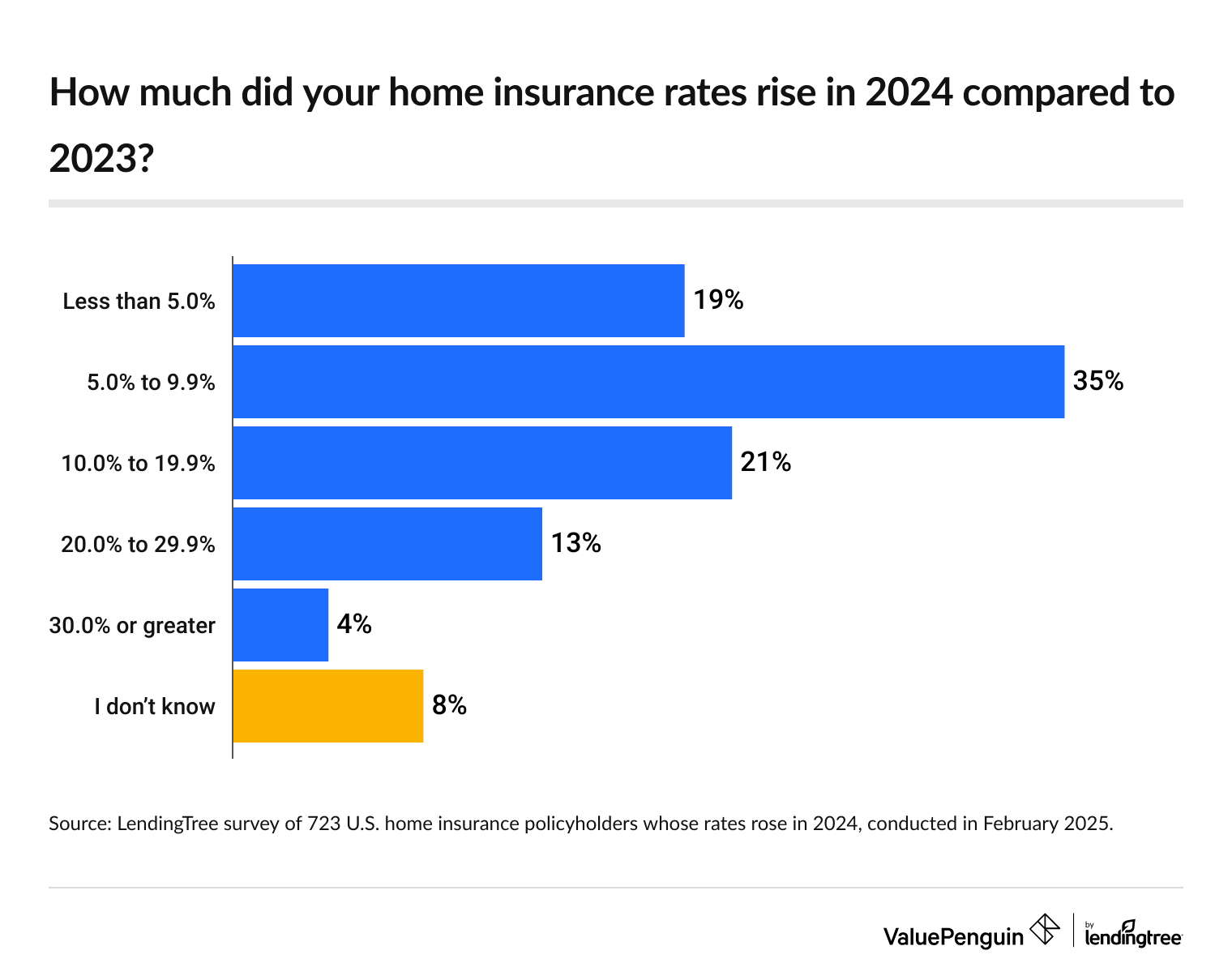
Regardless of whether they experienced rate hikes, policyholders are most likely to blame inflation for increases (63%), down from 72% last year. Other than inflation, policyholders point to:
- Rising home prices (48%)
- Homeowners filing more claims (35%)
- Insurance company greed (34%)
- Climate change (29%)
- Labor shortages (14%)
Bhatt believes a combination of issues is driving rate increases.
"We've been in an all-of-the-above situation for the past few years," he says. "Climate change has brought about an uptick in natural disasters, and inflation has driven up the cost of rebuilding homes. Insurance companies have to rebuild more homes, and each one costs more to rebuild."
75% of policyholders expect insurance rate hikes in 2025
Three-quarters (75%) of policyholders expect rate increases in 2025.
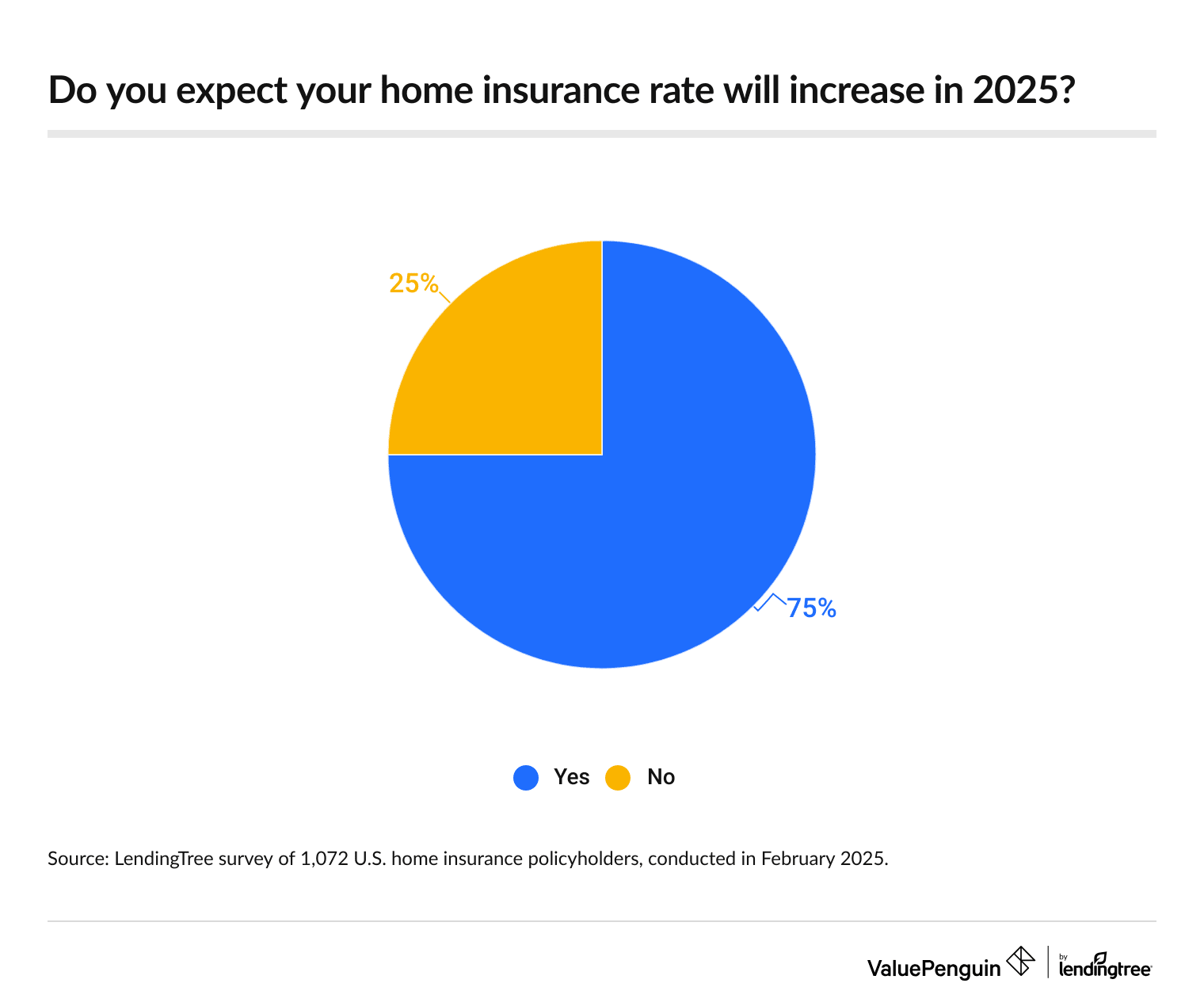
This is most common among Gen Zers (79%), those who earn $100,000 or more (78%), parents with young children (77%) and Gen Xers (77%).
As such, many policyholders (44%) say it’s gotten harder to afford their premiums. Policyholders in households earning less than $30,000 annually (57%) are the most likely to struggle now with premiums.
By generation, Gen Z policyholders (51%) are most likely to say they struggle more now to afford their home insurance, while baby boomers (36%) are least likely.
To cut costs, 34% of policyholders say they’ve downgraded or reduced their home insurance coverage (via higher deductibles, less coverage, etc.), saving an average of $782 annually by doing so.
Male policyholders (38%) are more likely to downgrade their insurance coverage to save money than women (30%). Those with children younger than 18 (41%) and those without children (35%) are more likely to reduce coverage to save than those with children 18 or older (24%).
By generation, Gen Z policyholders (65%) are most likely to downgrade or reduce coverage to save, followed by:
- Millennials (42%)
- Gen Xers (24%)
- Baby boomers (22%)
If you’re going to cut down on coverage to save, Bhatt says it's usually better to increase your deductible than to reduce your coverage.
He also recommends reviewing your policy to make sure you have enough coverage and aren’t paying for coverage you don’t need. You can determine the amount of coverage you need by creating a home inventory, he says.
"Every homeowner should have a home inventory, which itemizes your possessions and the value of each item or set," he says. "Compare the combined value of your possessions on your inventory to your policy's personal property limit to see if you have too much or too little coverage."
Shopping around is most popular way to save
Nearly 6 in 10 (58%) policyholders say they’ve shopped around for home insurance — a slight increase from 54% in last year’s survey. Male policyholders (62%) are more likely to shop around than women (54%).
Among those who’ve shopped around, 37% do so annually, while 39% do it every few years. Those who shopped around successfully saved an average of $1,034 annually the last time they did.
Related, 56% of policyholders say they’ve asked their insurer for discounts — including 39% who qualified and 17% who didn’t.
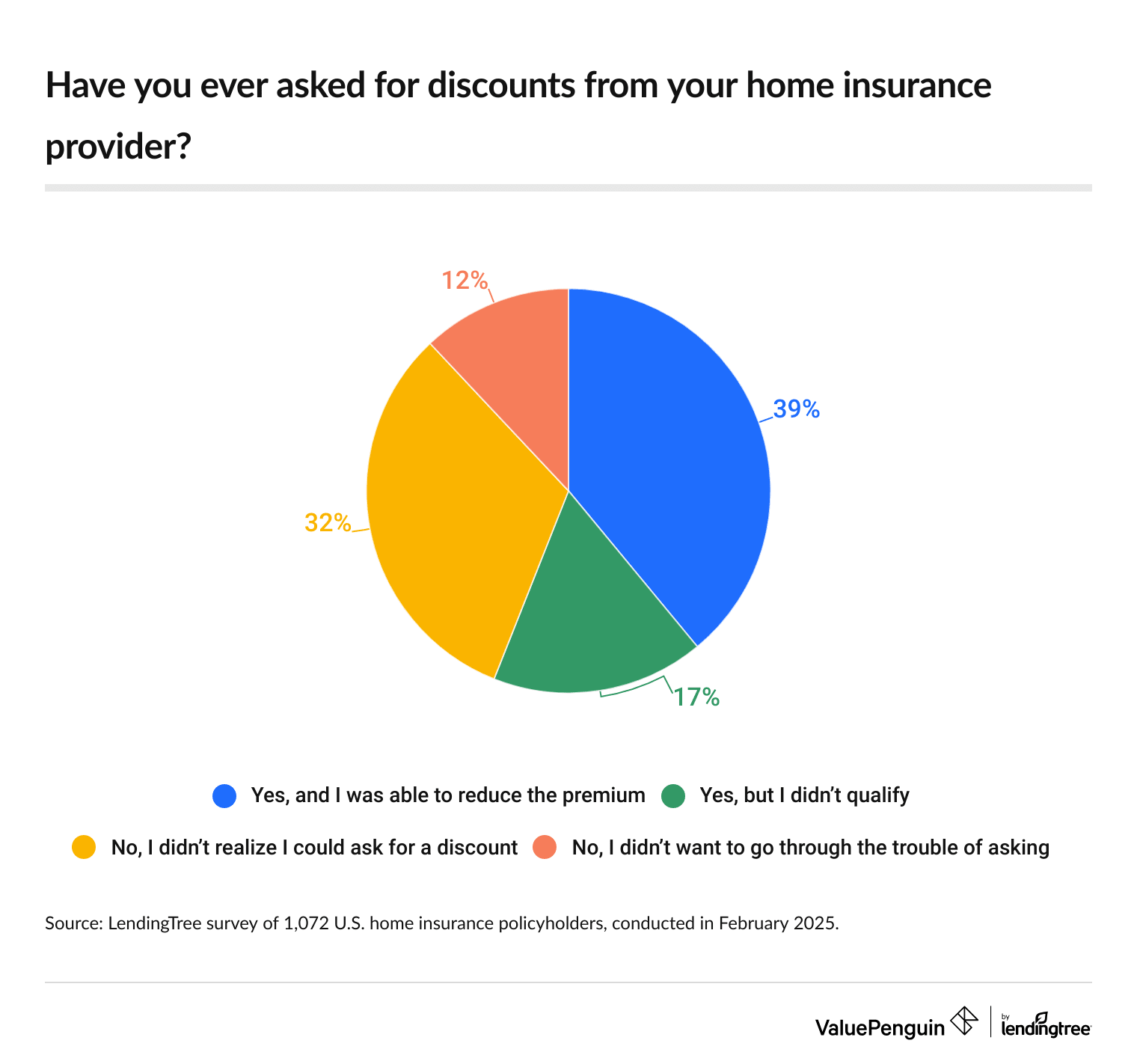
Male policyholders (61%) are more likely to ask for a discount than women (50%), and those with children younger than 18 (65%) are more likely to ask for a discount than those with adult children (51%) or no children (51%).
By generation, millennial policyholders (66%) are most likely to ask for a discount, followed by:
- Gen Zers (64%)
- Gen Xers (52%)
- Baby boomers (46%)
Those who asked for and received discounts saved an average of $781 annually the last time they did.
31% of homeowners have considered self-insuring
Nearly a quarter (24%) of policyholders don’t think home insurance is worth the money, and 31% have considered self-insuring. Self-insuring means dropping home insurance and planning to pay for incidents out of pocket.
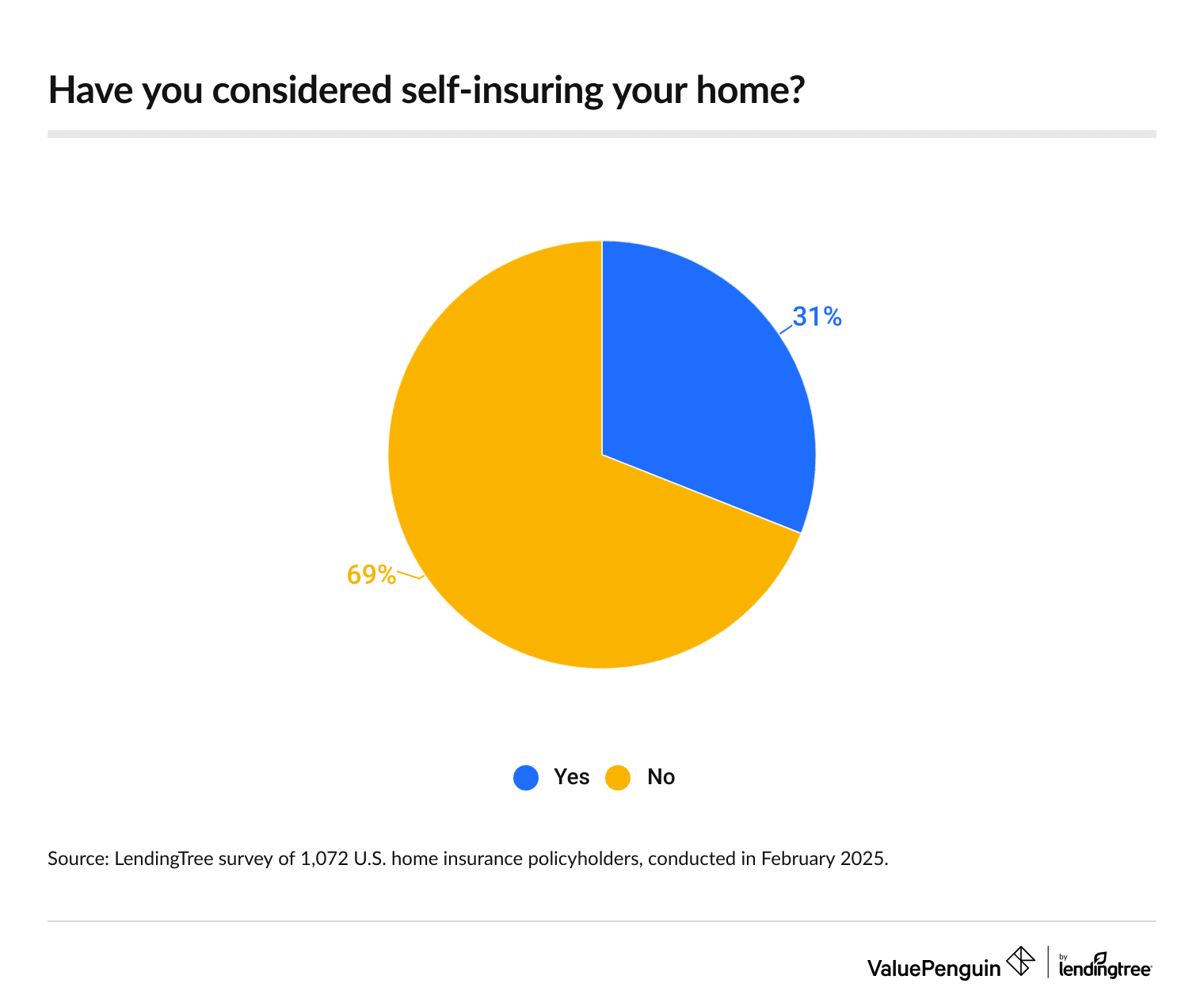
Male policyholders (36%) are more likely than women (25%) to consider self-insuring.
By generation, Gen Z policyholders (67%) are most likely to consider self-insuring, followed by:
- Millennials (42%)
- Gen Xers (22%)
- Baby boomers (13%)
Bhatt doesn’t think self-insuring is a good idea for most homeowners.
"I'd only recommend self-insurance to someone who wouldn't face financial hardship if their home was suddenly destroyed," he says. "I can't think of very many people in this position. Self-insurance works best if you never have a disaster. Unfortunately, you don't get to choose whether you'll have a disaster."
How to keep homeowners insurance costs down: Top expert tips
If you’re having trouble affording your insurance, or if you want to make your home more appealing to insurance companies, there are some strategies you can try:
- Ask your insurance company for a discount. Although only 56% of policyholders asked for a discount, 70% of those who asked for a discount received one, saving an estimated $781 annually.
- Shop around. Policyholders who shopped around for home insurance and switched insurers report saving an average of $1,034 a year the last time.
- Keep your home maintained, and build or renovate with weather-resistant materials. "Newer homes and homes with upgraded roofs, heating and plumbing are more attractive to insurance companies than older homes that haven't been updated in a while," Bhatt says. "If you live in an area with wildfire risks, consider installing fire-resistant roofing and clearing defensible space around your home."
- Don’t file claims for minor issues. "Insurance companies often drop customers with multiple claims of any size," he says. "Having to replace a stolen bike or fix a broken window out of your own pocket may cause some short-term financial pain. However, it's usually better over the long term to foot these types of bills yourself and save insurance for the big stuff."
Methodology
ValuePenguin commissioned QuestionPro to conduct an online survey of 1,999 U.S. consumers ages 18 to 79 from Feb. 20 to 21, 2025. The survey was administered using a nonprobability-based sample, and quotas were used to ensure the sample base represented the overall population. Researchers reviewed all responses for quality control.
We defined generations as the following ages in 2025:
- Generation Z: 18 to 28
- Millennial: 29 to 44
- Generation X: 45 to 60
- Baby boomer: 61 to 79
